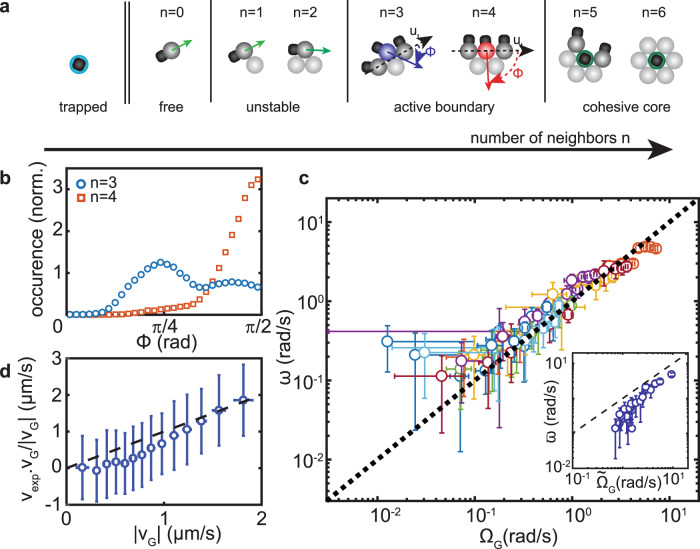Fig. 3. Pluripotent colloids.
a Heterodimers exhibit different functions as a function of their number of neighbors n. Heterodimers stand vertically in an optical trap (light blue). For n = 0 heterodimers navigate freely. For n = 1 or 2, the structure is unstable and the heterodimers detach. For n = 3 (purple) or 4 (red), heterodimers orient with respect to the local tangent ut, with and , respectively, and exert a force along their propulsion direction. For n = 5 or 6 (green), heterodimers are vertical and exert attractive interactions. b Histograms of the angles Φ of heterodimers for n = 3 (blue circles) and n = 4 (red squares) obtained from analysis of slender micromachines of different lengths. c Measured angular velocities ω for 22 different machines (1 color and 4 data points per machine), plotted against the prediction ΩG obtained by tracking of the instantaneous orientation and position of all constitutive swimmers in eq. (2). c Inset, mean value plotted against predicted from our simple model with fixed orientations Φ(n = 3) = π/4 and Φ(n = 4) = π/2 (see main text). d Projected translational speed measured by averaging data from all 22 structures plotted against the predicted translational speed vG from eq. (2). Black dashed lines in (c) and (d) indicate unity slopes. Error bars are 1 standard deviation.

